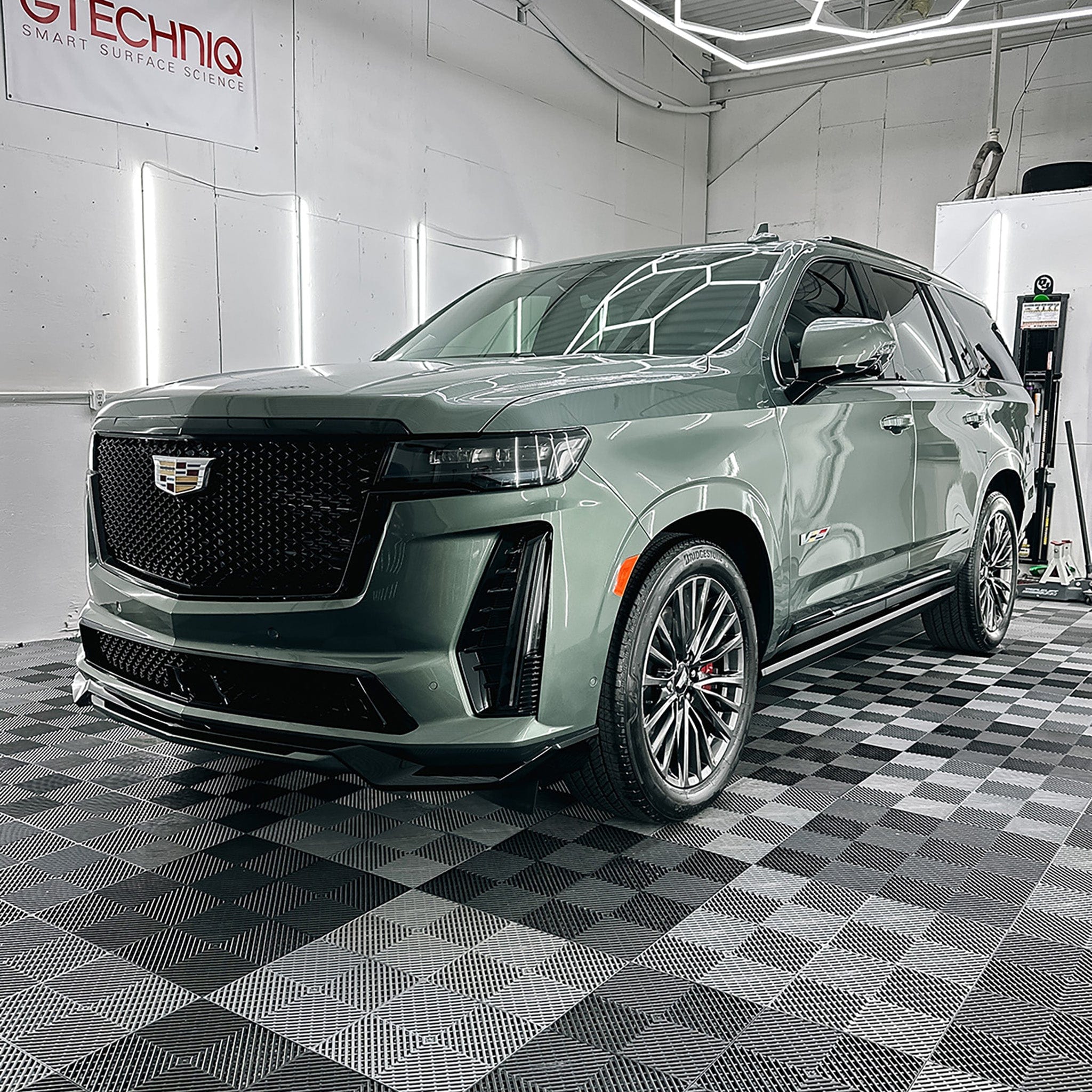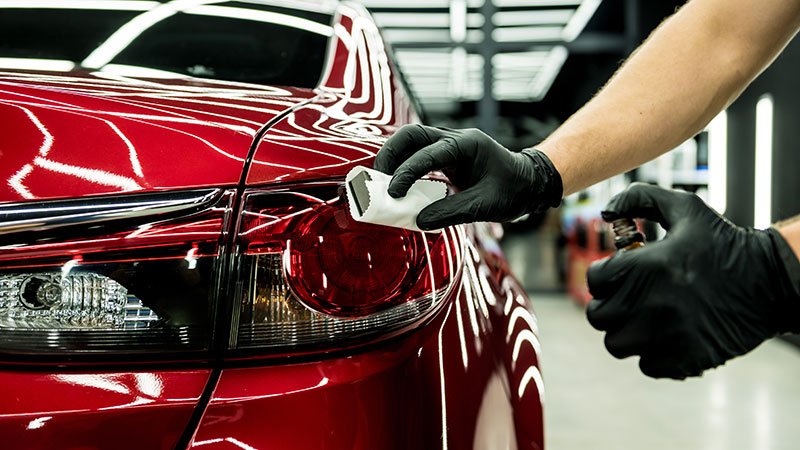How Explaining Porcelain Coating Boosts the Long Life of Your Auto's Paint
Ceramic finishing has become a critical modern technology in automotive outlining, offering a durable remedy for preserving the honesty of your vehicle's paint. By forming a safety layer that efficiently defends against UV rays, chemical discolorations, and ecological pollutants, this ingenious finish not only boosts the visual charm of the vehicle but also contributes to its general longevity. Understanding the complexities of exactly how ceramic finish works and its advantages over conventional wax can give important understandings for auto proprietors. What elements should you consider prior to making the investment?
What Is Ceramic Covering?
Understanding the safety benefits of ceramic finish starts with identifying its composition and performance. Ceramic finish is a liquid polymer related to the external surface areas of vehicles, primarily created to enhance and protect automobile paint. The key part of this finish is silicon dioxide (SiO2), which is stemmed from all-natural products like sand. This compound forms a strong chemical bond with the factory paint, creating a safety layer that is both resilient and hydrophobic.
The coating's application entails thorough prep work of the vehicle's surface area, which have to be complimentary from contaminants, scratches, and imperfections to make sure ideal adhesion. Once applied, the ceramic coating remedies to develop an inflexible guard that can hold up against numerous environmental variables, consisting of UV rays, chemical stains, and oxidation.
In addition, ceramic finishes are not simply surface-level treatments; they pass through the paint to give a lasting protection. This capability prolongs the lifespan of the vehicle's visual appeals while preserving its worth gradually. Recognizing these essential aspects of ceramic coating is crucial for car owners seeking reliable options for paint conservation and enhancement.
Benefits of Ceramic Finish
The benefits of ceramic layer prolong much beyond its basic safety attributes. Unlike traditional wax or sealants, ceramic finishings produce a solid bond with the vehicle's paint, enabling it to hold up against environmental hazards such as UV rays, acid rain, and road salt.
Furthermore, ceramic coatings provide hydrophobic residential properties, implying they repel water and contaminants. This particular not only makes the car less complicated to tidy but likewise decreases the frequency of washing, conserving both time and effort for automobile owners. The glossy surface area created by the finishing stops dust and grime from sticking, boosting the auto's general tidiness.
Furthermore, ceramic layers boost the deepness and clearness of the paint, providing lorries a glossy finish that is visually striking. This aesthetic enhancement further adds to keeping the automobile's resale worth, as a well-maintained exterior is a major selling point for potential customers. On the whole, the advantages of ceramic coating make it a worthwhile investment for anybody aiming to safeguard and enhance their car's paintwork.
Just How Ceramic Finishing Works

The finish's hydrophobic residential or commercial properties repel water and dirt, stopping the build-up of grime on the surface area. This not only makes the auto easier to clean but likewise reduces the likelihood of scratches and swirl marks triggered by traditional washing methods. The ceramic layer acts as a guard versus UV rays, which can cause fading and oxidation over time.
Once cured, the finish displays exceptional resistance to chemicals, consisting of road salts, bird droppings, and tree sap, which can or else damage the paint. The long life of ceramic layers can last for several years, relying on factors such as maintenance and ecological problems. On the whole, the chemical bonding process of ceramic finishings gives a durable defense that maintains the integrity and look of a lorry's paintwork.
Comparing Ceramic Finish to Wax
Comparing ceramic coating to typical wax reveals substantial distinctions in efficiency and durability. While both products intend to protect a lorry's paint, their structures and longevity established them apart. Wax, normally made from all-natural carnauba or synthetic products, gives a short-term guard that normally lasts only a few weeks to a few months, depending upon ecological problems and upkeep routines.
In comparison, ceramic finishes are advanced options made up of inorganic products that bond chemically with the lorry's paint. This creates a durable, semi-permanent layer of security that can endure for several years. Consequently, ceramic coverings offer superior resistance to UV rays, chemical discolorations, and physical abrasion, considerably lowering the danger of oxidation and fading.
Furthermore, the hydrophobic homes of ceramic coatings ensure that water beads up and rolls off the surface, making it harder for dust and grime to stick. This simplicity of cleaning is a noteworthy advantage over wax, which can attract dirt and call for regular reapplication. Inevitably, for car proprietors looking for durable protection and enhanced aesthetic allure, ceramic finishes provide an extra reliable choice to typical wax products.
Maintenance Tips for Long Life
Appropriate maintenance is crucial for maximizing the durability of a ceramic finishing. Normal cleaning is the foundation of reliable upkeep. Utilize a pH-balanced cars and truck hair shampoo to avoid breaking down the layer, and stay clear of automated auto washes with harsh brushes that can create micro-scratches. Instead, choose for a touchless automobile laundry or hand laundry.
To that site keep the hydrophobic residential or commercial properties of the ceramic finishing, take into consideration applying a maintenance spray or booster particularly designed for ceramic coatings every few months. This will strengthen the safety layer and boost water beading.
In addition, avoid exposing the layered surface area to extreme environmental conditions whenever possible. Auto parking in shaded areas or making use of an auto cover can stop UV damage and contamination from bird droppings, tree sap, or commercial fallout.
Finally, inspect the finishing regularly for signs of wear or damages. If informative post you observe a decrease in hydrophobic actions, it might be time for an expert reapplication. By adhering to these upkeep ideas, lorry proprietors can considerably extend the life and performance of their ceramic layer, making certain that their cars and truck's paint continues to be secured and visually appealing for several years ahead.
Final Thought
